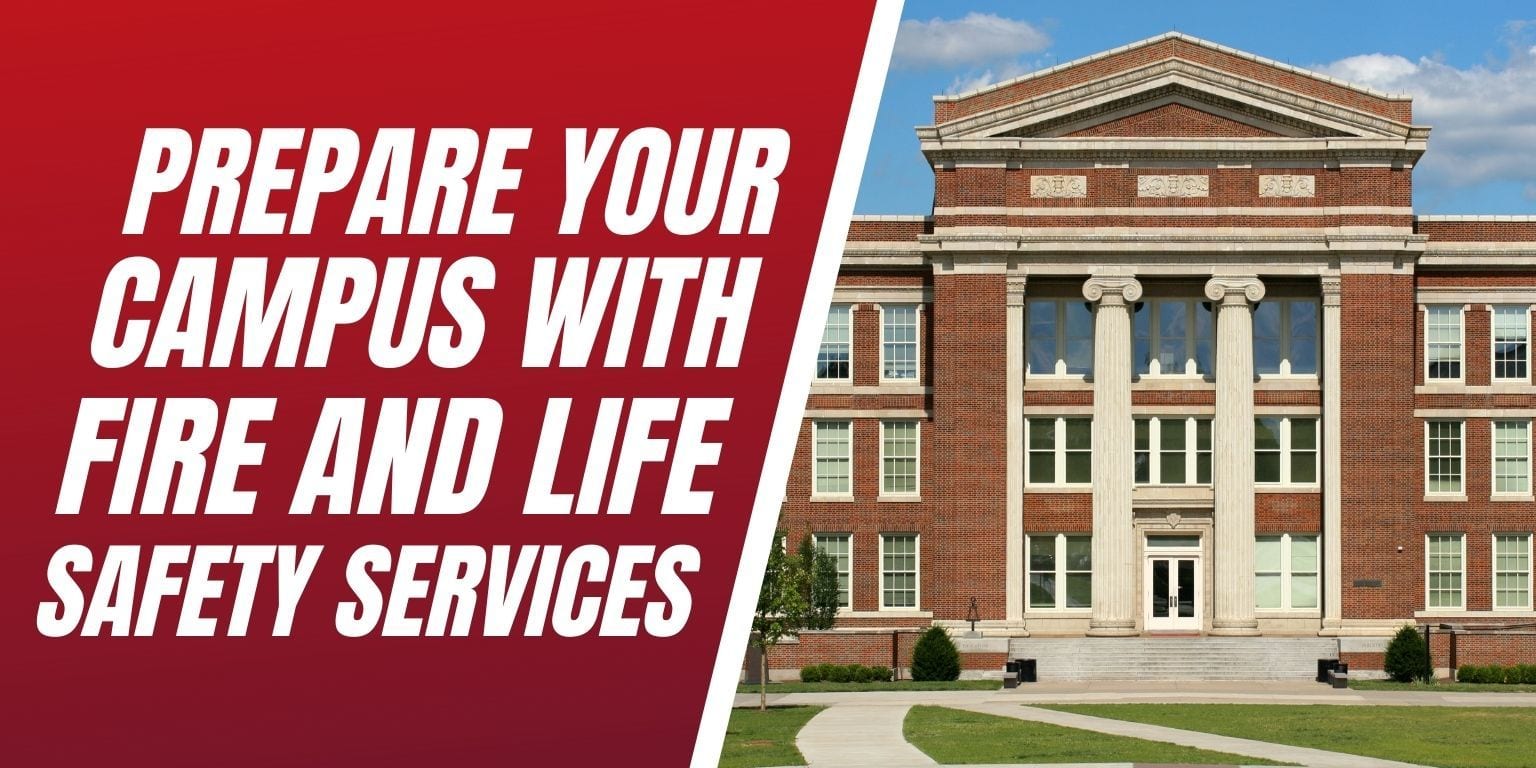
With only two months left of summer, fall semester is right around the corner. As an educational campus, you have many different buildings that cater to your students, faculty and staff. Naturally, fire safety is one of your many concerns, and being prepared is critical to all facilities. And now is the time to stay prepared for any fire risks. routine fire and life safety services are the best way to be prepared for a fire.
Fire and Life Safety Services to Prevent the Spread of Fire on Your Campus
Each building has its own group of systems that help compartmentalize a building through the use of fire-resistance rated walls/floors. Compartmentalizing your facility into smaller sections helps to slow or prevent the spread of fire/smoke from one room to the next. This helps to limit the amount of damage done to a building and provides its gusts more time for evacuation. However, in order to properly do its job, each system should be up-to-date according to the codes and standards. As a reminder to help you start preparing, here is how they can help protect both the buildings and its residents.
Fire / Smoke Damper Inspection & Repair
Fire dampers are used in ducts to prevent the spread of fire within the duct work through fire-resistance rated walls and floors. When the temperature rises, it melts the fusible link, which shuts the damper and prevents the spread of flame. Similarly, smoke dampers are used in duct work designed to resist the passage of air and smoke. Typically, a smoke detector will send a signal to the smoke damper that will close by an actuator when smoke is detected. Lastly, a combination damper, which is a fire and smoke damper, are used in areas where both fire and smoke barriers are located to prevent the passage of both flames and smoke.
According to the National Fire Protection Association (NFPA 80 and 105), Dampers must be inspected, tested and repaired. The frequency for the inspections must be every four years for non-healthcare facilities and every six years for every healthcare facility.
Fire / Smoke Door Inspection & Repair
Fire doors are designed to prevent the spread of fire and smoke between fire barriers. It serves as a regular door by giving you an easy outlet during a fire, while compartmentalizing the building to help prevent the spread of fire, smoke and toxic fumes. The best places for fire doors are leading to a stairwell or any horizontal exits, hazardous areas, hallways or corridors, and any fully enclosed room to another.
The National Fire Protection Association (NFPA 80) requires inspections annually with a written record kept for your local Authority Having Jurisdiction (AHJ)
Firestop Survey & Installation
Fire walls/barriers compartmentalize a building by preventing the spread of fire and smoke through the use of fire-rated walls, floors and ceilings. Firestopping is essentially the maintenance of these barriers by sealing any holes or gaps found from penetrating items. It is crucial that walls be properly repaired when damaged, altered, breached or penetrated in any way. Caulking is the procedure used to seal joints in structures and some types of piping.
Both the International Building Code (IBF) and the International Fire Code (IFC) states that fire-resistance-rated ceiling, walls and floors shall be visually inspected annually, and properly repaired or replaced when damaged, altered or breached.
Installation of Photoluminescent (PL) Egress Markers and Exit Signage
PL Egress Markers and Exit Signage are designed to clearly mark exit pathways and doors, making it easy for building occupants to follow. Egress signs should be placed in key locations throughout the facility to indicate the safe areas in which occupants can exit to
According to both the IBC and the IFC, “luminous egress path markings that outline the exit path should be provided in buildings having floors that are located more than 75 feet above the lowest level of a fire department vehicle”.
Contact Us Here or call 888.675.4519 to find out how LSS can help you maintain your campuses fire and life safety protection systems!

